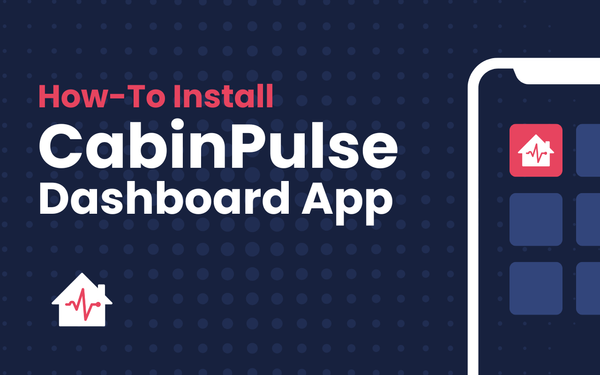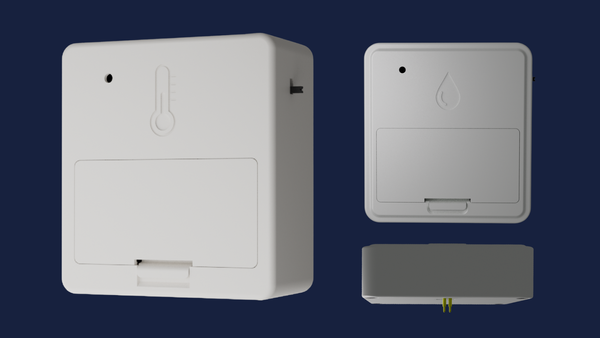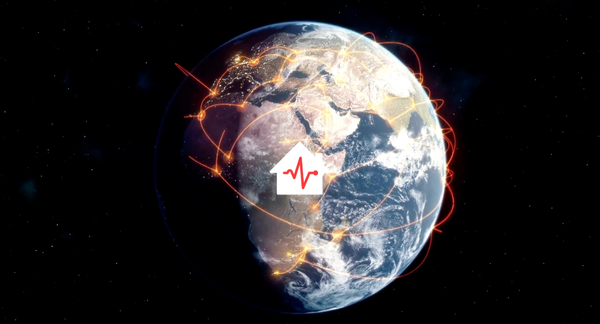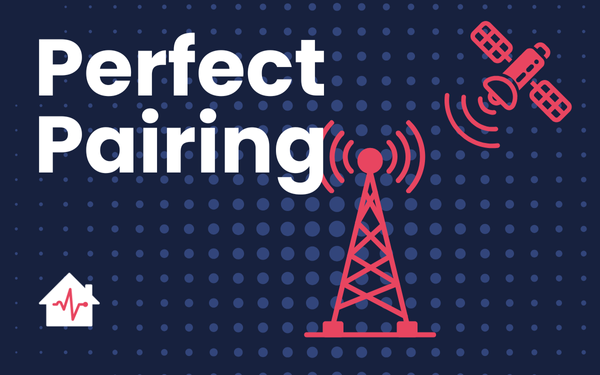5 Myths About Remote Temperature Monitoring, Busted
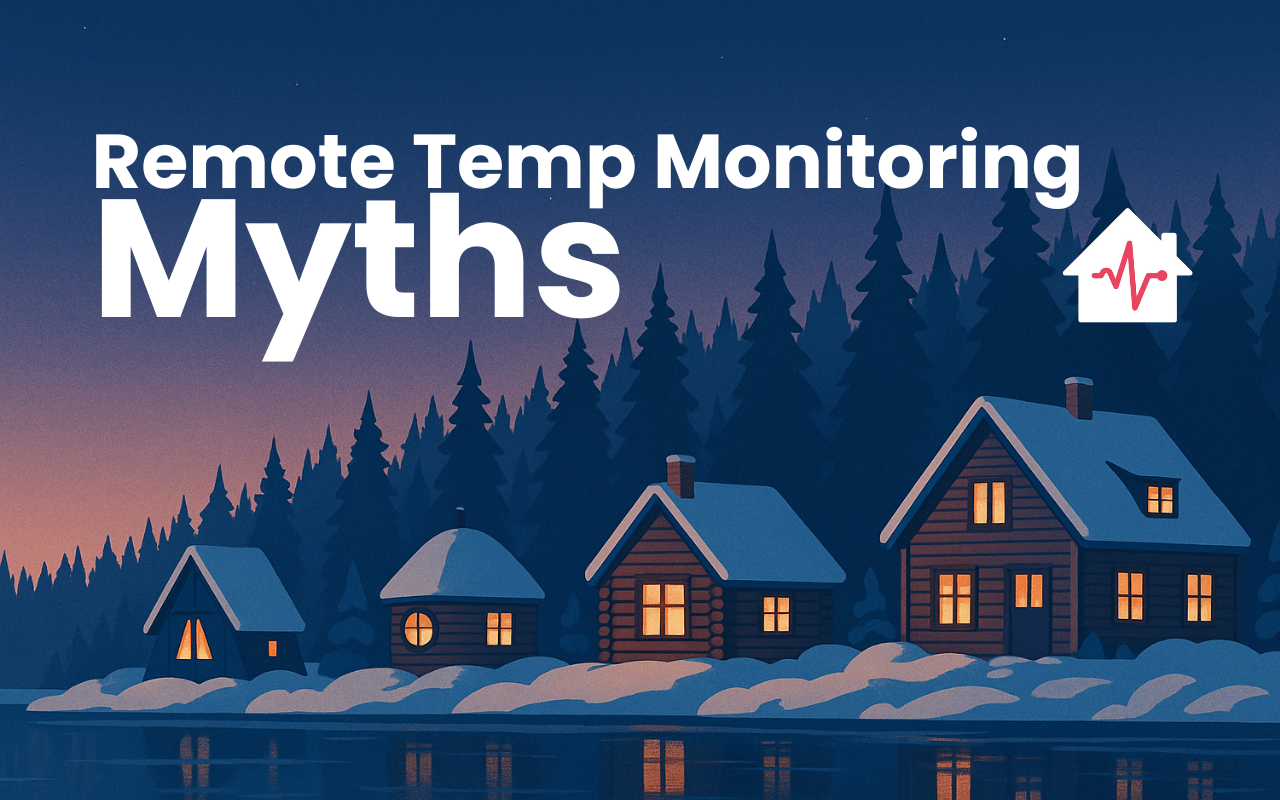
Remote temperature monitoring used to sound like something only large corporations or techy folks with satellite dishes could afford. Today, reliable, always-on monitoring has become a realistic, budget-friendly option for nearly any Canadian property owner. Still, five stubborn myths keep circulating online and around the campfire. Let’s lay them to rest once and for all!
Myth #1: “These systems are way too expensive.”
The myth: You'll need year-round wifi, a pricy installation and $1000 device just to get started. Why spend hundreds of dollars every month when you can just cross your fingers (or pay a neighbour) to check on things?
The reality: Modern cellular monitors cost about the same as a decent smart thermostat—but do far more. CabinPulse, for example, is a one-time $199 CAD device fee plus as little as $10 CAD/month. Contrast that with even a single frozen-pipe claim, which averages $16,000 CAD in repairs. Factor in insurance deductibles, travel to deal with the mess, and lost weekends, and the math tilts hard toward prevention.
Bottom line: For less than the price of a Netflix subscription and one dinner out each month, you can dodge five-figure disasters and endless headaches.
Myth #2: “Everything needs Wi-Fi, which my cabin doesn’t have.”
The myth: Cottages, barns, and outbuildings often sit well beyond the reach of affordable WiFi.
The reality: Cellular-based devices don’t require Wi-Fi at all. CabinPulse ships with an embedded SIM that roams across Bell, Rogers, TELUS, SaskTel, and more. If your phone shows even a single bar of LTE or 3G, the monitor will connect. And when the power drops (taking the router down with it), a Wi-Fi-dependent smart thermostat goes dark—but cellular hardware keeps transmitting on its backup battery.
Bottom line: Reliable remote monitoring is finally untethered from the modem. No landline, no satellite, no problem.
Myth #3: “Electronics freeze up or fail in harsh weather.”
The concern: Canadian winters are legendary, and electronics are finicky, right?
The myth: Industrial-grade monitors are built for the extremes. CabinPulse is officially rated for continuous operation from -20 °C to 60 °C while plugged in. In practice, units have been tested outdoors in −35 °C cold snaps in northern Saskatchewan and scorching 45 °C midsummer heat inside an uninsulated barn loft, without missing a single data push.
Bottom line: These made-in-Canada devices are designed for the weather Canada throws at them.
Myth #4: “Setup and maintenance are a pain.”
The myth: Running wires, pairing hubs, climbing rafters… who has time?
The reality: Today’s devices ship almost “set-and-forget.” With CabinPulse, you:
- Activate the device code in the online dashboard.
- Plug it in to any standard outlet.
- Check your phone. Within five minutes you’ll see live temperature, humidity, and power status right in the app.
No drilling, no Wi-Fi passwords, and firmware updates happen automatically over the air. Ongoing maintenance amounts to dusting the case and confirming alerts a couple of times a year, about as demanding as changing smoke-alarm batteries.
Bottom line: If you can plug in a nightlight, you can install a modern cabin monitor.
Myth #5: “There’s poor service where my cabin is anyway.”
The myth: Poor or patchy coverage means that
The reality: Canadian carriers have quietly expanded LTE into cottage country and farmlands over the past decade. A multiband SIM hops across networks automatically, hunting for the strongest tower. In fringe zones, a simple window placement can double signal strength. For truly stubborn spots, a palm-sized LTE booster antenna — about $60 online — will often do the trick.
Real-world proof: CabinPulse units have reported flawlessly from a tin-roofed cabin at Wakaw Lake with “intermittent one bar service”, thanks to that built-in roaming SIM that can use both LTE and 3G.
Bottom line: Give today’s LTE/3G multi-carrier SIMs a shot before assuming you’re off the grid. If you can get even one bar on your cell phone, you’ve got more than enough signal for a sensor that sips only a few kilobytes an hour.

Key Takeaways
- Affordable peace of mind: Subscription-based monitoring costs far less than one insurance claim.
- No Wi-Fi required: Cellular connectivity (with battery backup) stays online even when the power and internet do not.
- Built for Canadian weather: Industrial-grade sensors shrug off deep freezes, summer heat, and everything in between.
- Plug-and-play simplicity: Five-minute installation; automatic updates; minimal upkeep.
- Surprisingly broad coverage: Multi-network SIMs plus occasional signal boosters keep cabins connected across most of Canada.
Modern remote temperature monitoring isn’t a luxury gadget.
It’s a practical, cost-effective safety net for anyone who owns a cabin, barn, second home, or remote industrial site.
With the myths busted and the facts in hand, you can protect your property confidently, no matter how far the highway or how fierce the forecast!

